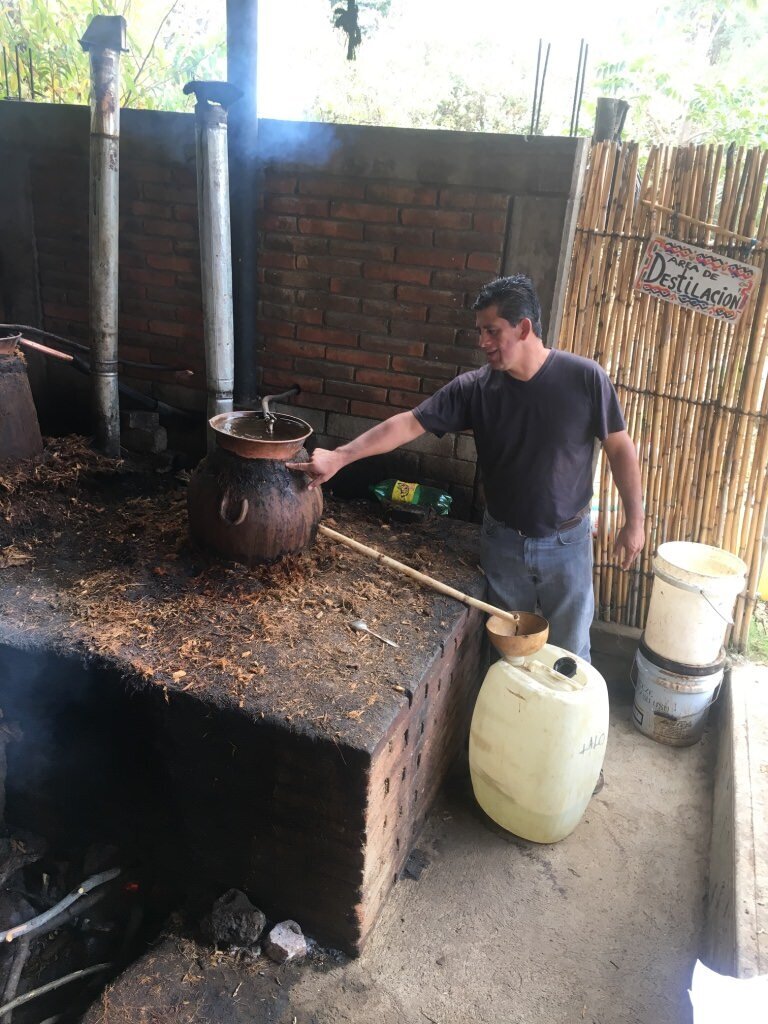San Martinero-Tobasiche
48.18%
Eduardo Ángeles, Santa Catarina Minas, Ocotlán, Oax.
Over the past couple of years, Lalo has made a point to focus on running a series of mezcla experiments. Working with the many varietals that grow in Minas, Lalo selected two or three at a time, roasting, mashing, fermenting, and distilling them together. To date, he’s tried 20+ combinations of different varietals, repeating the experiments on his favorites with different proportions in order to better understand how the varietals work together.
It’s an interesting new direction for someone whose known for his dedication and focus on expressing the unique essence of individual varietals and the places in which they grow.
“When teaching beginners, master tasters of wine or chocolate talk about single varietals because the first thing people need to know about is basic flavors,” Lalo says. “It’s the same as when you go to school, they first teach the ABCs and 123s. Once you understand that, you’re ready to put the letters together to make a word, then a sentence. That’s the logical, essential way to learn.
“Mezcales, however, were historically always mezclas. This meant that people were not considering the basic component flavors and aromas. Even the local people who knew these plants didn’t know what their mezcal tasted like on its own because they had only tasted them together. People only knew what mezcal from one place tasted like compared to that of another place. I recognized this and wanted to teach people about the essence of each type of agave by distilling them separately.
“Two years ago, I thought ‘not everyone, but I think at least 50% of the people who drink Lalocura in México understand the basics, so let’s show them more of the original flavor of mezcal - mezclas of different magueyes.”
SIpping on the August, 2019 batch, Lalo says, “I don’t really like mixing agaves, but these two make an excellent mezcla. It’s my second favorite after tobalá-tobasiche. I get the tobasiche’s strong aromas right up front, with the aromas of san martinero just behind it, too. I don’t like writing tasting notes, but I think it smells like ripe fruits. It almost tastes like ripe fruit too, but it’s a little too mineral.
“I’ll keep making it whether people like it or not because it exemplifies what I’m trying to do with these mezcla experiments,” Lalo continues in classic Lalo fashion. “It’s one where both magueyes appear clearly. There are many experiments that produce delicious results that people like very much, but I don’t repeat them because I prefer mezcales that are rooted in the plants from which they’re made. Whatever plants go into the mezcal, we should appreciate how they are together, not one and then the other or some new taste that doesn’t represent the plants on the label. It’s all about the magueyes.”








